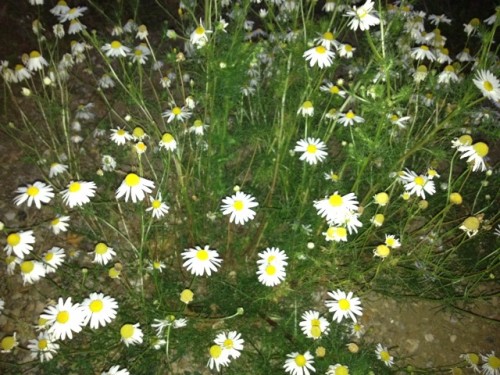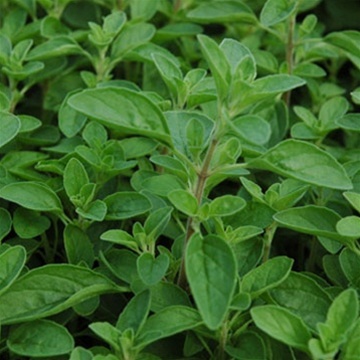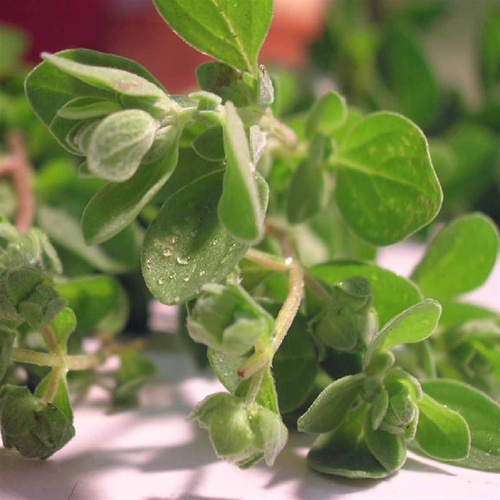by Kenan White | Jul 26, 2013 | Recipes |
After working, taking care of kids, and running errands, the last thing almost anyone wants to do is figure out what is for dinner. Instead of spending more money on unhealthy food, have a few easy and healthy go-to weekday dinner plans. Cooking does not have to be difficult, and summer is just around the corner. It is time for farmers markets, fresh tomatoes, and basil in your garden. Enjoy your summer dinners by using fresh herbs such as basil to make your meals easy, tasty, and nutritious. Instead of having to hit the store every day, get fresh herbs straight from your garden. Below are three easy and healthy basil recipes.
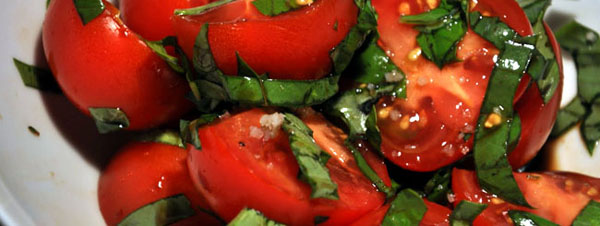
1. Simple and Delicious Tomato and Basil Salad
Cooking does not get much easier than this. Note that it is important to use ripe tomatoes that are in season. The recipe can easily be adjusted to serve between two and several dozen people.
6 small servings of salad
Ingredients:
- Several ripe heirloom tomatoes
- Several basil leaves, coarsely torn
- Olive oil
- Balsamic Vinegar
- Salt
- Pepper
Shortly before serving, slice the tomatoes and arrange them on a plate facing up. Lightly drizzle the olive oil and balsamic vinegar on the tomatoes. Top the tomatoes with the basil. Season with salt and pepper to taste.
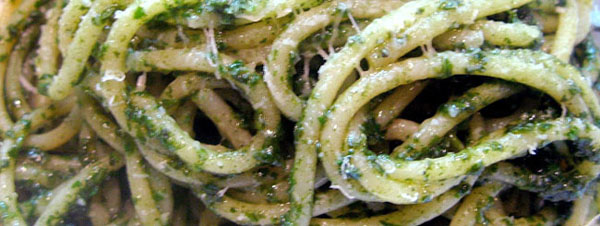
2. Easy Pesto Sauce
Pesto sauce is a way to make spring and summer pasta dishes more festive. When stored in airtight containers, this sauce will last about 6 months in the freezer. Freezing sauce in individual containers is highly recommended as the sauce takes time to make and is better when made in larger quantities.
8 cups of sauce
Ingredients:
- 2 cups fresh basil
- 4 garlic cloves
- 1 cup pine nuts
- ¾ cup olive oil
- ½ cup pecorino cheese, grated
- 2 ½ cups parmesan, grated
- Salt
Boil basil leaves for 5 seconds or until wilted, drain, squeeze out excess liquid, and set aside. Blanche the garlic. Coarsely chop the basil. Place the basil, garlic, pine nuts, and olive oil in a large bowl. Use a hand mixer to blend into a coarse sauce. Stir in the cheeses, and season with salt to taste. Put extra sauce in small airtight containers for later use.
The easiest way to turn pesto sauce into a complete meal is to make quick pasta. By having extra sauces on hand, dinners can be as easy as boiling pasta water and reheating the sauce in a microwave or on the stovetop. Homemade sauces are quick and easy in addition to being cost-effective.
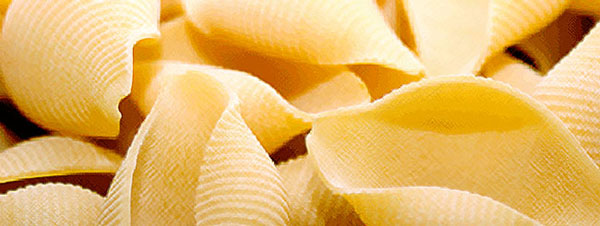
3. Shell Pasta With Creamy Basil Sauce
This recipe tastes very similar to a traditional Alfredo Sauce. By using yogurt instead of heavy cream, this pasta is healthier without sacrificing taste. The fresh basil and feta give this dish more interesting and subtle flavors along with a great, creamy texture. Eliminating the chili flakes can make this dish more kid-friendly. For people that like more of a kick, extra hot Syrian or Turkish chili flakes can make the dish even better.
Serves 4
Ingredients:
- 2 cups plain Greek yogurt
- 2/3 cups olive oil + a few tbsp. extra
- 1 lb. bag frozen peas
- 1 lb. pasta
- 1/3 cup pine nuts
- 2 tsp. chili flakes (adjust to taste)
- 1 2/3 cups coarsely torn basil leaves
- ½ cup feta cheese
- Salt and pepper
Place the Greek yogurt, olive oil, and ¼ cup of the peas into a food processor. Blend into a uniform sauce and transfer to a large mixing bowl. Cook the pasta according to the directions until al dente. Fry the chili flakes, pine nuts, and some of the peas in olive oil for about 4 minutes. Drain the pasta and shake well. Add the pasta gradually to the yogurt sauce while stirring constantly to avoid curdling. Note: adding the pasta all at once might cause the yogurt sauce to split. Immediately before serving, add the basil, and feta. Season with salt and pepper to taste. As a last step, pour the pine nuts and oil mixture over the top of the dish.
Have a better life by eating better food
One of the best ways to make healthy food taste better is to put in a little extra effort and add herbs such as basil instead of preservatives. Take advantage of summer produce that is readily available. Who knows? You might fool the guests at your next dinner party or potluck into thinking that you went to culinary school by understanding flavor profiles and cooking easy, delicious food with fresh herbs from your garden.
by Kenan White | Jul 10, 2013 | Herbs, Recipes |
What Is Marjoram And How Can I Use It?
Whether you are a veteran chef or you are just learning how to cook, you are sure to benefit greatly by adding herbs to your list of favorite cooking ingredients. Foods that are cooked with herbs simply taste better. When first starting out on your culinary journey, it can be intimidating to look at the vast array of herbs available at the grocery store or farmer’s market and know what to do with them. It is best to do some research on different types of herbs and sure fire food combinations to use with them that have been tried and tested.
Some herbs are more common than others. For example, you may have heard of the herb thyme, but perhaps you have never heard of the herb marjoram. If you have a pre-packaged herb and spice rack in your kitchen with a little bottle labeled “marjoram”, you may have asked yourself the question, “What is marjoram and how can I use it?” Of course we always prefer fresh herbs, and you can purchase marjoram plants online directly from our store.
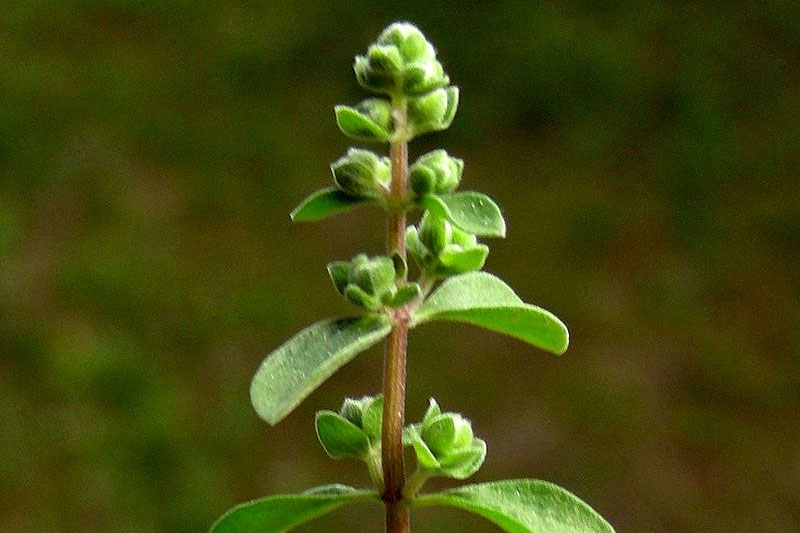
Marjoram plant with flower buds
What Is Marjoram Exactly?
Marjoram is an herb in the mint family that is commonly mistaken for oregano, although it has a milder flavor. Many say that it has a slight taste of citrus and sweet pine. It grows wild in Mediterranean countries such as Cyprus, Turkey, and Greece, and is a popular additive to their sauces, soups, and meat dishes. Because marjoram is a perennial, it can live for several years. However, it typically does not survive cold temperatures. If you decide to grow marjoram on your own, you may need to replant it in a pot during the colder months, depending on where you live. This herb prefers full exposure to the sun and is best planted in well-drained soil where it has room to spread.
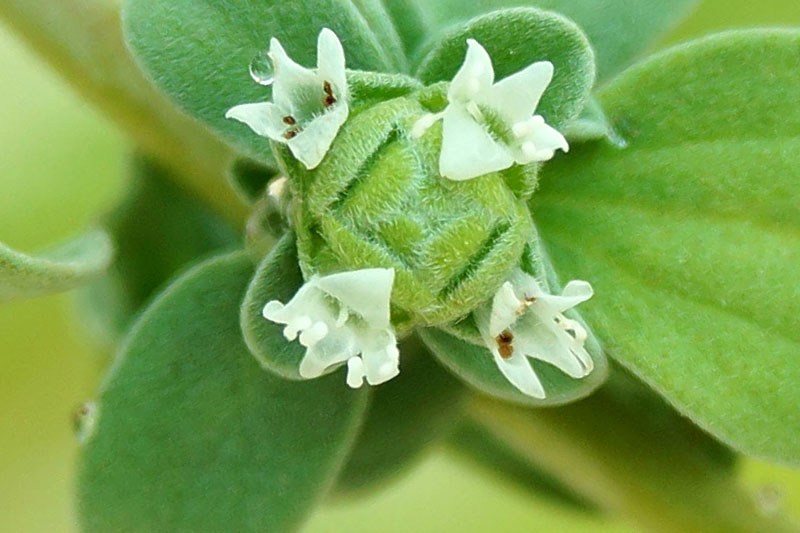
How Can I Use Marjoram?
The herb marjoram is often used in body care products such as soaps, lotions, and shaving gel. It is sometimes made into an essential oil used in aromatherapy treatments because of its apparent ability to sooth one to sleep and reduce stress. Some other proposed benefits of Marjoram include its ability to relieve flatulence, nausea, cramps, and swelling.
Aside from marjoram’s health and beauty uses, it also has many culinary uses. Both fresh and dried leaves can be used to season foods with its mild, bittersweet taste. It is often included in the popular English dish of roast goose with chestnut stuffing and in German cooking as a part of a spice mixture added to sausage. In most recipes, you will see marjoram called for in combination with other herbs and spices such as oregano, basil, and parsley.
Recipes That Call For Marjoram
Try the following recipes or experiment with some of your own in order to get a taste of marjoram.
Black-eyed Peas and Leeks
Recipe from Miriam Bale
- 4 leeks, dark green parts trimmed, quartered lengthwise, sliced in ½ inch segments
- 3 cups cooked black-eyed peas
- ¼ – ½ teaspoon dried marjoram
- 1 teaspoon dried tarragon
- 1 tablespoon olive oil
- 3-4 tablespoons butter
- salt to taste
The night before, cover black-eyed peas with water and soak them for at least four hours. Drain, place in a large pot, and cover with about 3 inches of water. Simmer until the peas are cooked through, salting generously in the last ten minutes of cooking. While the peas are cooking, heat the olive oil over medium heat with 1 tablespoon of the butter in a large pan. When hot, add some salt and stir in the leeks. Cook gently, stirring frequently until the leeks appear golden. Add the peas to the skillet. Cook until heated through, and then stir in the marjoram, tarragon, some salt, and the remaining 2-3 tablespoons of butter.
Grilled Fish with Orange and Marjoram
Recipe from Eric Werner
- 2 1 1/4-pound gray snapper, whole porgy, or branzino, cleaned
- 8 sprigs fresh marjoram + 1 tablespoon marjoram leaves (dried marjoram can be used)
- 2 small oranges or tangerines, peeled, seeded, and separated into segments
- 2 tablespoons olive oil
- salt and pepper to taste
Prepare a charcoal grill or a gas grill to medium-high. Make 3 diagonal slices spaced about 1 1/2″ apart on each side of fish. Season fish with salt and pepper to taste. Stuff each fish with 4 herb sprigs and segments from 1/2 orange. Rub each fish with 1 tablespoon oil. Grill fish for 3-4 minutes, or until skin no longer sticks. Carefully turn fish and grill until cooked through, about 3-4 more minutes. Transfer to platters and garnish with remaining marjoram leaves and orange segments.
Using marjoram in health and beauty care or in cooking is a great way to explore this less-often used herb. As you try out other uses for marjoram in recipes and in everyday life, you are sure to be delighted by its unique aromatic properties.
by Kenan White | Apr 10, 2013 | Life on the Farm |

I’ve never actually taken the time to add things up, but I think it’s probably safe to say that over the course of my career, I’ve grown 3 million plants. They’re all for you.
Oh, sure, it sounds impressive, but it’s really a labor of love. It’s what I love doing, and I simply can’t imagine doing anything else. For some people, gardening is a hobby on the side. For me, it’s a way of life.
The truth is, though, I haven’t just been growing plants for you during all of this time. I’ve also been growing and harvesting fruits, vegetables, and ornamentals for my own personal use and consumption.
It goes a bit further than that, though, and lest I risk the nickname “Johnny Appleseed,” I’ve actually been sowing millions of seeds on almost any patch of ground I can find. After all, I’ve had 800 acres to fill for years. It’s a bit tough to tell exactly how many plants I’ve fathered.
I planted 50 acres to help encourage wildlife reproduction of all kinds. Letting plants grow without interference means offering birds, small mammals, and other wildlife the chance to get food for themselves and nurture entire families. It’s literally the chance to build a self-sufficient ecosystem, a chance few people actually take advantage of.
I’ve also replanted former crop land with warm season grasses like prairie grasses and wildflowers, creating beauty where there was once only a clearing.
I’ve already told you that part of the reason behind this planting frenzy is that it’s just who I am, but it’s probably more than that. My plants mean that we have healthier soil and more bountiful wildlife. It means that we have the native pollinators we need to replace the dying honeybees.
We’ve even gone so far as to be part of the CRP program, a federal program that helps farmers use environmentally sensitive land for the benefit of conservation. In fact, we were the first to be 100% compliant with the Chesapeake Bay Act. We took poor cropland out of production and replanted it as a buffer to the James River.
When you take the time to make your next order, it’s fine to imagine me as Johnny Appleseed. I’m endlessly collecting and planting seed all over the farm, and I guess I always will be.
by Kenan White | Jan 24, 2013 | Gardening, Growing, Herbs, Life on the Farm, Seeds |
The Delta-T heating system we purchased will deliver heat where it matters most to plant development, the root zone. Everyone knows that a healthy plant must have a healthy root system. To insure all Growers Exchange herb plants fill their pot with vigorous roots, we will keep soil temperatures at 65 degrees to stimulate rapid root development.
To keep the green plant tops from growing too quickly, the air temperature in the greenhouse will be at 50 degrees at night. Growth is slower at cooler temperatures so the stems are thicker and stronger. The stem length between nodes is shortened, creating a symmetrical plant.
Bottom heat will also allow us to propagate more plants from cuttings. Many herbs like rosemary, lavender, and mint are best increased by vegetative propagation, also known as cloning. A mist system keeps the non-rooted plant stems hydrated until the warm soil promotes root growth. In about a month a new plant is ready to be re-potted.
Tropical herb plants like Lemon Verbena, Lemon Grass, Vietnamese Coriander, Dill, and Basil will also benefit from the new bottom heat. Try as we do, some days we can only keep the greenhouse but so warm. Wood fired space heaters warm the greenhouse air; but some winter days only so much heat is possible. We could also consider stone flooring that promotes underfloor heating and is able to retain heat well, allowing the plants to stay warm even when it’s cold outside. The bottom heat system, however, will act as a great attachment to the other options ensuring that our plants stay in their optimal temperature zones. Now we will be able to keep the root zone of these tropical herbs at their desired 65 degrees no matter what is happening outside.
As greenhouse growers, this new bottom heat is as exciting as Christmas! We will have plenty of herb plants ready for spring planting. The bottom heat helps the seedlings prepare for Spring. Winter is the best time to plan your herb garden. Don’t forget to order early, many herb plants are grown in limited quantity. And a tip from a greenhouse grower: have plants sent as early as your planting zone allows.
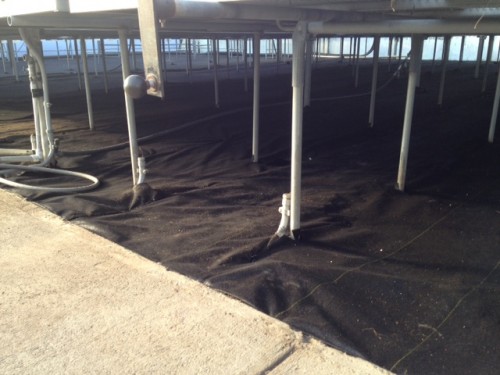
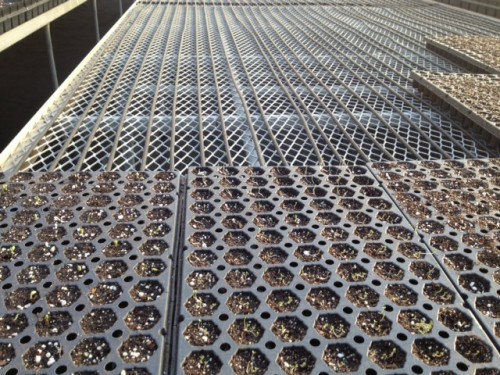
by Kenan White | Nov 12, 2012 | A Year in the Life.., Gardening, Life on the Farm |
The Growers Exchange herb garden is under going it’s fall make over. Most of the annuals have been removed: several frosts left basil looking limp. Fall is the best time to move and divide perennials. Having substituted all the flowering plants with herb plants, we must study their garden characteristics just as with plants grown strictly for flowers.
The border along our office wall needed a new screening plant at the back of the bed. We were looking for a tall green plant to high light the shorter herbs growing in front. We could have easily chosen fennel in green or bronze to block the white wall, but they are already being used are center specimens in island beds. Lovage is another plant with potential for screening.
The lovage in the photo was dug from another place in the garden. Along with the main clump, we divided off four smaller plants. These will be set out to catch up with the parent. If needed, the main clump could have been divided again into four or five smaller plants. In this case we wanted one large plant. If you have a lovage plant that requires moving or dividing, fall is the best time. The plant will establish roots until the ground freezes; this will produce a larger plant the following spring. To promote root growth an organic fertilizer should be applied.
by Kenan White | Oct 1, 2012 | A Year in the Life.., Exploring, Gardening, Growing, Herbs, Miscellaneous, Wildlife |
Chamomile a weed? One person’s weed is another person’s herb!
While on a trip to Prairie Canada, I was surprised to find find common chamomile blooming among the prairie plants. After first spotting this familiar herb, I began seeing it along the road shoulder, in fields of peas and beans, and even in the lawn where I was staying. From my host, I learned that on the prairie farmers consider chamomile a noxious weed and work hard trying to eliminate it from their crops fields. This is a good example for comparing a desirable herb plant from a weed. And as the description for weeds explains; it all depends on where a plant is growing! So even though chamomile is a weed is some places, it is a welcome herb in my garden. I have plenty of other plants on my own weed list!
